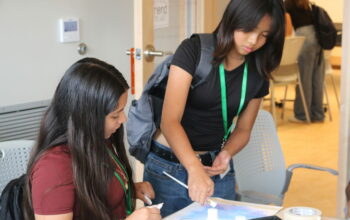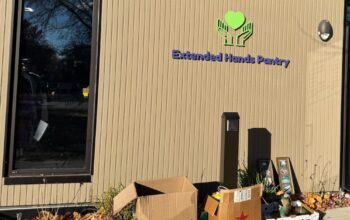In a move signifying its largest conservation acquisition in county history, Dane County announced a plan in August to purchase 625 acres of property in the towns of Verona and Montrose for the Sugar River Wildlife Area.
The county plans to convert the space, which now consists of mostly croplands, to prairie and simultaneously provide restoration opportunities for woodland, savanna and wetland. By connecting the $12.1 million property to the Sugar River Wildlife Area Davidson Unit, the county will establish 840 acres of its own land for public leisure and wildlife habitat.
With more than 5,500 new community members since 2020, Dane County’s recent surge in population has prompted developers to pounce on “For sale” signs throughout the county. In some cases, this urban and suburban development can transform natural green space into brick and concrete, something responsible for contributing to a steep decline in Wisconsin’s original native prairie over the past 150 years.
Climate change and shifts in weather patterns have taken shape throughout the Midwest, and securing this extensive acreage will allow the county to establish habitat, clean water and clean energy to mitigate the impact of development and the global climate crisis.
Laura Hicklin, director of the Dane County Land & Water Resources Department, said the county certainly considered these factors before moving forward.
“With climate change and more intense storms we’ve been getting over the last several years, we’ve also begun to recognize or better acknowledge that when we have these large tracts of open space, they buffer and mitigate against the impacts of these changes,” Hicklin said. “Properties like this are going to help store water during flood years, sequester carbon, and trap and hold nutrients. We need to make sure that Mother Nature has enough room to do its job.”
These properties are becoming increasingly difficult to come by, especially in an expanding region like southern Wisconsin.
Shedd Farley, executive director of the Farley Center, a nonprofit dedicated to promoting ecological sustainability outside Verona, can attest to recent flurries in development. Stationed in Springdale, he can observe all 108 acres of the organization’s farm and wooded land. Five miles away, however, development appears much different.
“Right now, Verona just seems to be granting building permits everywhere,” Farley said. “Developers are building on every square inch of land that is accessible, including farmland.”
That’s part of the reason why this purchase is so significant for the county and its surrounding community, supporters say. By connecting the Sugar River Wildlife Area Davidson Unit’s existing public hunting land and stream frontage to the 625 acres, the county will make the space even more accessible to the public.
Safe parking spaces, access to water recreation and opportunities for trapping, snowshoeing, fishing, and ungroomed cross-country skiing will await visitors within the Sugar River corridor.
“The Sugar River corridor is a natural resource gem for the Dane County community,” Dane County Executive Joe Parisi said in a press release on Aug. 15, 2023. “We are thrilled to preserve and restore this land along the popular Sugar River corridor for the public’s future use and enjoyment.”
Due to the sheer volume and size of the property, alterations within the property boundaries will not transpire immediately, Hicklin said.
“We’ve learned that, generally, the community where property is located is more satisfied with the outcomes of our long term ownership and management if we work on a transition plan,” Hicklin said. “Our goal is not to come in and change everything overnight. We want to take some time to figure out where it makes the most sense for the public to utilize this property.”
Nonetheless, a property once dominated by farmland will eventually morph into a natural haven for wildlife and a place of respite for outdoor-minded individuals.
“Over the next five to seven years, we will develop public access sites where people can park a bike or a vehicle to get onto the property,” Hicklin said. “You’re not going to find paved trails, you’re not going to find shelters, you’re not going to find flush toilets or campgrounds or basketball courts. This is a property where we really let the natural features dominate, and then we try to encourage public uses of recreation that’s compatible with that.”
As a byproduct of the purchase, Wisconsinites can discover tranquility in an eco-friendly atmosphere. It’s a need that Farley, committed to empowering community members through the natural sphere, knows all too well.
“People need to get out, be in the woods, the prairies or outside the hustle and bustle,” Farley said. “That’s important for everybody, even if they don’t know it.”






